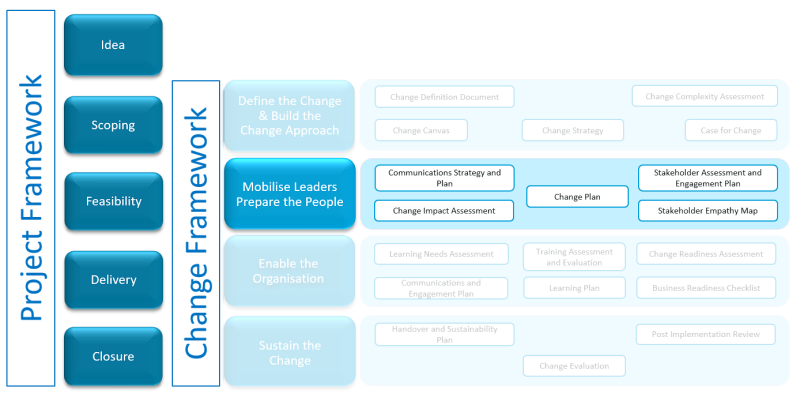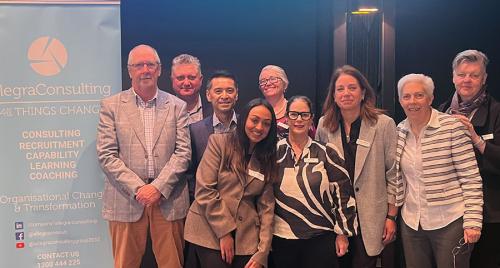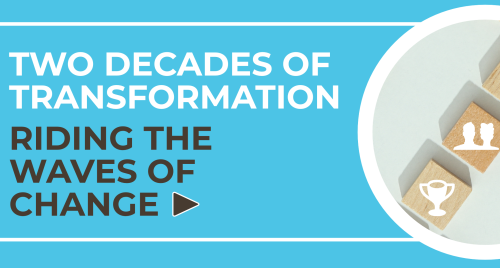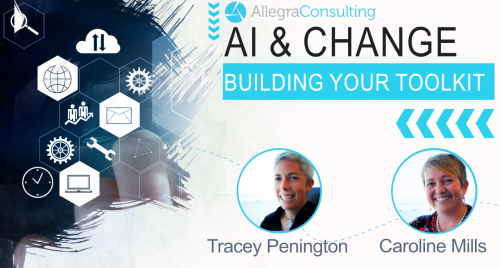
Change Management is the systemic approach to transitioning people through change so they are ready, willing and enabled to change from a current state to a new desired state.
As leaders and change and transformation practitioners, the behaviours and activities we manage and lead must focus on the psychology of change - the ready and willing, and the technical side of the change - the enable.
Once you have Defined the Change and Built the Change Approach, it is time to mobilise the leaders and prepare the people. This phase is critical because it sets the tone for the entire change process. If not executed correctly, it can lead to employee resistance, confusion, and ultimately, failure of the change initiative and adoption.
To mobilise leaders and prepare people for change, the following steps can be taken:
Develop a Clear and Compelling Vision
Provide a clear and compelling vision of the change initiative and communicate it to all employees. The vision should outline the change initiative’s key goals and objectives and help employees understand why the change is necessary.
Identify and Engage Key Stakeholders
Identify the key stakeholders who will be impacted by the change and involve them in the change process. Engage them in discussions, listen to their concerns and feedback, and incorporate their ideas into the change initiative.
Build a Change Management Team
Establish a dedicated change management team that will lead the change initiative. The team should have the expertise and skills to effectively manage the change process.
Provide Leaders with Training and Support
Ensure the leaders have the knowledge, support and resources to champion the change, both technically and psychologically.
The below resources are essential during this phase.
Change Impact Assessment
- Informs change planning.
- The assessment measures the impact of the change on customers and people.
- One of the most important documents you can complete in the change suite.
Communication and Engagement Plan
- Detailed plan for communication activities.
- It ensures that communications and engagement are consistent and timely to encourage understanding, ownership and acceptance of the change across all levels.
Change Plan
- Defines the approach to managing the impact of the change.
- The plan provides a detailed overview of the change initiative.
- Informs of outcomes from the Change Impact Assessment - which business units, employees and members are impacted, the type and level of change impact and the plan to manage organisational structure, people, and behavioural changes.
Stakeholder Assessment and Engagement Plan
- Identifies the key stakeholders, including those most impacted and those with high influence over the outcome of the project.
- With this understanding and knowledge, the project team can plan the most impactful approach to engage with stakeholders throughout the life of the project,
By following these steps and using these critical change management tools, leaders can mobilise their teams and prepare their people for the upcoming change, increasing the chance of success for the change initiative.
The Change Space membership provides a comprehensive suite of change management resources for experienced practitioners and those wanting to develop their change management capabilities. The change management toolkit is designed to help individuals and organisations effectively plan, execute, and evaluate change initiatives, providing a structured framework and templates to guide the process.
Whether you work in the change and transformation industries or are interested in the field, The Change Space is perfect for you. Join us, build your knowledge and develop your skills to drive successful change initiatives.
Find out more at https://www.thechangespace.net









